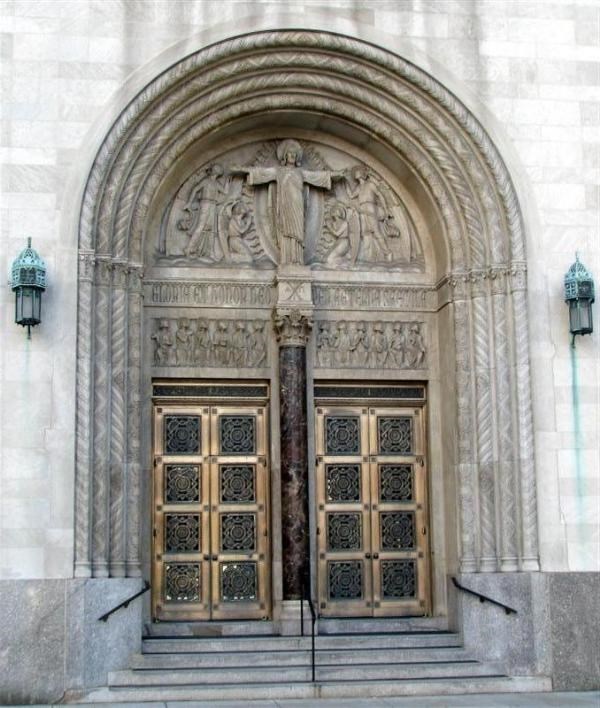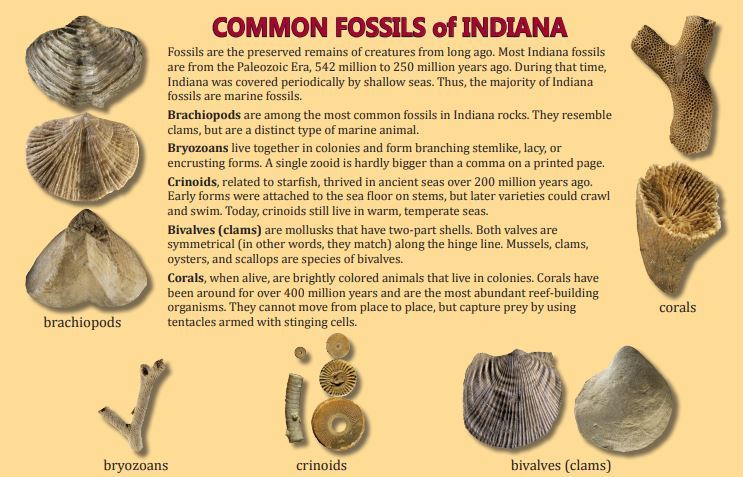Many types of stone are used for St. Louis Roman Catholic Church, located at Eighth and Walnut Streets. This church was built in 1928. Most of the exterior is clad with Salem Limestone, now known commercially as Indiana limestone. In the past this stone also has been called Bedford stone or Indiana Oolitic limestone. Salem Limestone is of Mississippian age and is quarried in southcentral Indiana. It long has been one of the most popular building stones in North America because of its ready availability, its ability to be easily cut in any dimension (it is a freestone), its ability to be easily carved (it is not as hard as many other dimension stones), and its durability. In fact, Indiana limestone is the only building stone to be used in all 50 states!

This limestone consists primarily of small whole marine fossils and broken pieces of larger marine fossils. Disc- shaped sea lily stem pieces and parts of bryozoans can be seen easily in the stone used for this church. The Salem Limestone was deposited in fairly shallow sea water. This stone is quite porous- many small holes are visible under magnification. Despite, or perhaps because of, this quality, it is quite durable.
Fossils occur in blocks of the 330-million-year-old Salem Limestone, a rock unit that formed in a warm, tropical sea. At that time, most of the land mass now known as North America lay south of the equator. Shallow, clear water covered the area that stretches from present-day Nebraska to Pennsylvania. A myriad of organisms swam and crawled about this placid sea. When they died, their bodies settled to the sea floor, over time solidifying into a 90-foot-thick stone menagerie. This homogeneous matrix of corpses formed a rock that cuts cleanly and evenly in all directions.

Wave action from long-still tides shattered most of the shells, but many organisms persist and stand out. A unicellular animal known as a foraminifer, which lived in the ooze and muck of the sea floor, is common in this limestone but hard to see, even with magnification. Dotted throughout the walls, and easily discernible, are the poker-chip-shaped stems of crinoids and also bryozoans (a sedentary animal that formed colonies of complexes patterned like Rice Chex cereal. Many shell fragments come from pelecypods, the group that includes oysters, clams, and scallops. A rare find is a perfectly formed half-inch-long snail shell, which resembles a tiny swirled dunce cap.
A pink granite is used around most of the base of the exterior. This stone not only adds color to the building, but also protects the base of the building. Even with modern coatings, Salem Limestone does not hold up well when it is subjected to large amounts of salt, as would the base of a building in an area where salt is used for ice control.
Sources: Wikipedia and OSU
To get credit for this earthcache, send answers to the following questions to my account:
- Explain how this limestone formed 330 million years ago.
- How does it feel?
- Find a crinoid or bryozoan fossil and describe its shape and size.
- Does the limestone or granite look more eroded?
- Post a picture of yourself (face not required) or a personal item at the church.
congrats to TEAM YEGIGA for the FTF!